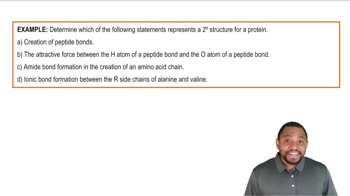Here are the essential concepts you must grasp in order to answer the question correctly.
Nucleophilic Substitution Reactions
Nucleophilic substitution reactions involve the replacement of a leaving group in a molecule by a nucleophile. In the case of haloalkanes, the halogen acts as the leaving group, while the nucleophile, such as sodium ethanethiolate, attacks the carbon atom bonded to the halogen. The mechanism can proceed via either an SN1 or SN2 pathway, depending on the structure of the haloalkane and the conditions of the reaction.
Recommended video:
Nucleophiles and Electrophiles can react in Substitution Reactions.
Secondary Haloalkanes
Secondary haloalkanes are organic compounds where the carbon atom bonded to the halogen is also attached to two other carbon atoms. This structure influences the reactivity of the compound, as secondary haloalkanes can undergo both SN1 and SN2 mechanisms. The choice of mechanism affects the product formed; in this case, the formation of a thioether is favored when treated with a strong nucleophile like sodium ethanethiolate.
Recommended video:
Secondary Protein Structure Example 2
Thioether Formation
Thioethers are compounds formed when a sulfur atom replaces a halogen in a haloalkane. The reaction with sodium ethanethiolate leads to the substitution of the halogen with the ethylthio group, resulting in a thioether. This process is particularly favorable for secondary haloalkanes due to steric factors and the strength of the nucleophile, which can effectively displace the leaving group.
Recommended video:
 Verified Solution
Verified Solution



 0:58m
0:58m
